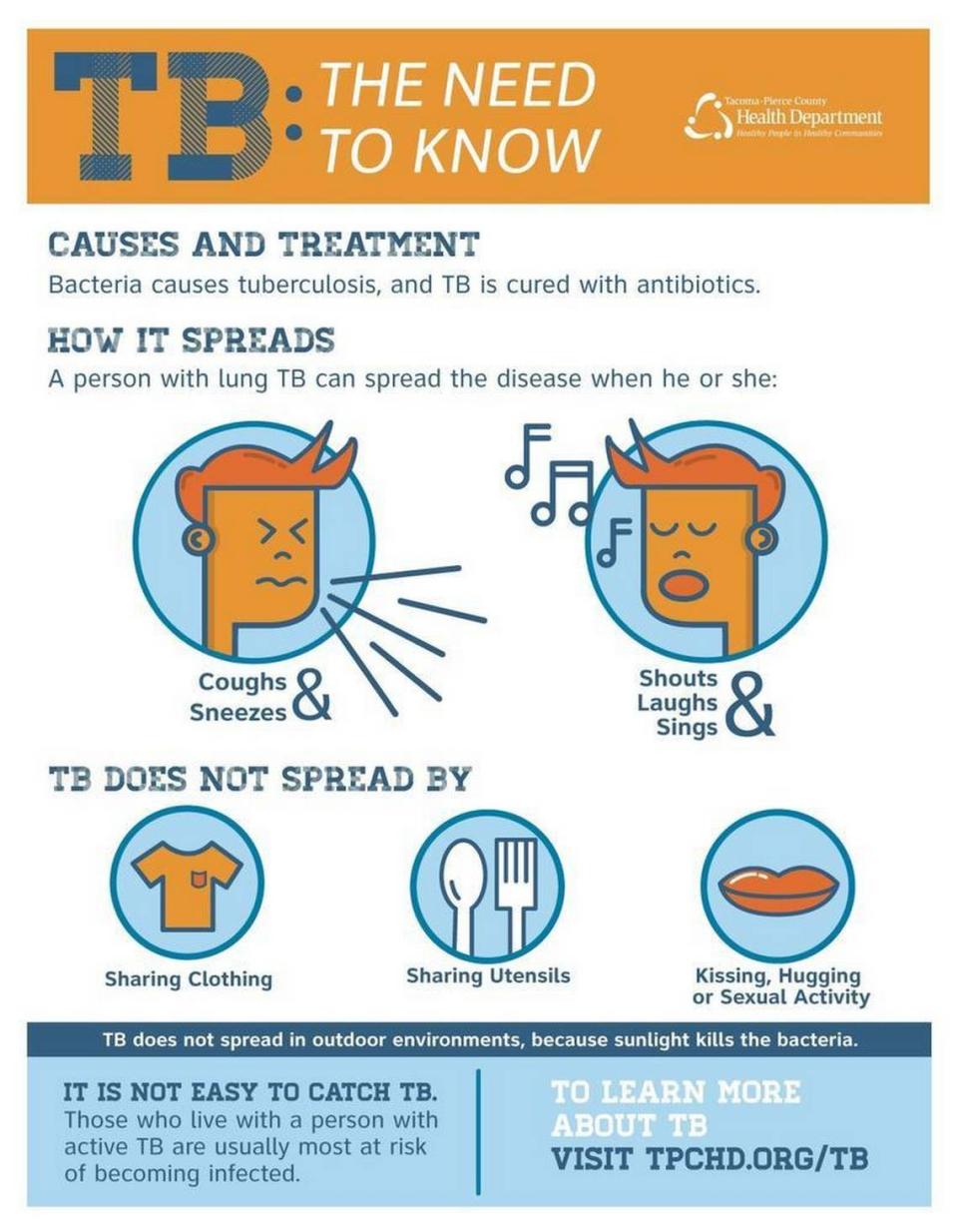There’s an active tuberculosis case in Tacoma. Here’s what to do to keep yourself safe
On Monday afternoon, the Tacoma-Pierce County Health Department stated it’s monitoring an active case of tuberculosis in Tacoma. The resident has declined to take medication, according to TPCHD.
“Most people we contact are happy to get the treatment they need,” stated Nigel Turner, division director of Communicable Disease Control, in the health department’s news release. “Occasionally people refuse treatment and isolation. When that happens, we take steps to help keep the community safe.”
Because TB is uncommon in Washington, many people may not know how to identify its symptoms or understand how it spreads.Here’s what you need to know about the disease and how to keep yourself and others safe.
What is tuberculosis?
Tuberculosis, also called TB, is a bacterial disease that can affect any part of the body, but it most typically affects the lungs, according to TPCHD. If left untreated, it can result in death. Treatment requires months of medication, according to the Mayo Clinic.
How common is TB?
TB is one of the most prevalent diseases in the world, according to TPCHD, but it’s uncommon in the U.S. In 2021, there were over 7,800 cases in the U.S. reported to the Center for Disease Control and Prevention. This amounts to just over two cases per 100,000 people.
In Washington state, about 200 cases are reported every year on average. Only 15 to 25 of these cases happen in Pierce County, according to the TPCHD.
How does tuberculosis spread?
Tuberculosis is spread through the air, according to the CDC. It’s typically passed from person to person when someone spends extensive time indoors near someone with an active case of TB. Here’s what to know about how it spreads:
A person infected with the disease may spread it when they cough, speak, laugh or sneeze. People can only get infected when they breathe in these particles.
They can’t get infected from someone’s clothes, drinking cup, eating utensils, toilet or other surfaces exposed to a TB patient.
The disease can’t be spread by just touching someone who is infected, as well. For instance, shaking hands with an infected person wouldn’t necessarily transmit the bacteria.
TPCHD says that people who are most at risk for catching the disease are those who work in health care, people who live with someone sick with active TB, or people who live or work in crowded areas like shelters, nursing homes, treatment centers or jails.

What are TB symptoms?
According to the Mayo Clinic, there are two kinds of tuberculosis infections: latent TB and active TB.
People who have latent TB carry the bacteria, but the germs aren’t active and don’t cause symptoms. It’s also not contagious when latent. It can become active, especially later in life when someone’s immune system has weakened. The CDC said that as many as 13 million people in the U.S. may carry the latent infection but may not be sick with the disease.
Active TB is contagious and when health professionals consider someone sick with the disease, not just infected with TB bacteria. The symptoms can occur weeks or years after a person catches the infection. Symptoms include:
Coughing for three or more weeks
Coughing blood or mucus
Chest pain
Pain when breathing or coughing
Weight loss
Fatigue
Fever
Chills
Night sweats
Appetite loss
The CDC says that people can take either a skin or blood test to confirm whether they have the infection or not. For the skin test, medical staff inject a small amount of test liquid into a patient’s lower arm. The patient returns to the facility two to three days later so the health care provider can see if the arm reacted to the liquid. The result depends on the size of swelling caused by the liquid. Results for the blood test are usually available within a week. Health providers may request to take other tests, such as chest X-rays.
TPCHD offers a list of facilities in Pierce County that offer skin and blood tests.
How can you protect yourself from TB?
According to WebMd and the CDC, there are ways you can protect yourself and others from tuberculosis:
If you’re concerned about catching TB, you can get vaccinated. The vaccine is called bacille Calmette-Guerin, or BCG, and is not typically administered in the U.S. The CDC recommends that children and health care workers take in on a case-by-case basis.
If you have been around someone who has TB, consider getting a test from your local health care provider.
If you have latent TB, seek treatment from a doctor. They may recommend you take treatment to keep the germs from becoming active. You may take medication for three to four months.
If you have active TB, stick to taking the medication that your medical provider prescribes you, even when you start to feel better. You might be taking medicine for six to 12 months. In addition, during your first weeks of treatment, you should always cover your mouth when you sneeze, seal your tissues in plastic bags before throwing them away, wash your hands after coughing or sneezing, use a fan to circulate fresh air indoors and stay home from work or school.

